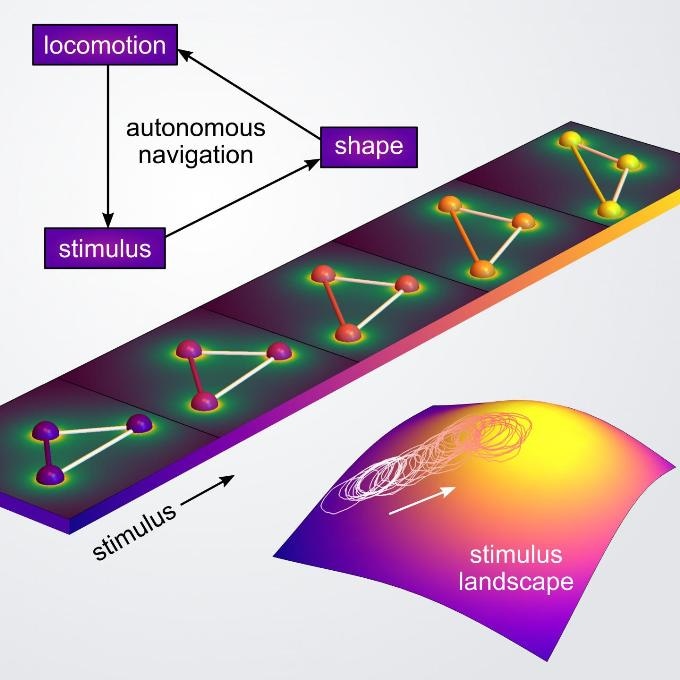Dec 11 2019
A majority of the synthetic materials, such as those in battery electrodes, catalysts, and polymer membranes, tend to deteriorate with time since they lack intrinsic repair mechanisms.
 This is a schematic of autonomous navigation mechanism via shape-shifting. Image Credit: Yong Dou/Columbia Engineering.
This is a schematic of autonomous navigation mechanism via shape-shifting. Image Credit: Yong Dou/Columbia Engineering.
If autonomous microrobots can be distributed inside these materials, the microrobots can be used to continuously carry out repairs from within.
New research performed at the lab of Kyle Bishop, associate professor of chemical engineering, has put forward an approach for microscale robots with the ability to sense symptoms of a material defect and autonomously reach the defect site, where corrective actions could be carried out. The study has been reported in Physical Review Research on December 2nd, 2019.
Swimming bacteria search for areas of high nutrient concentration by combining molecular motors and chemical sensors, quite similar to a self-driving car that makes use of information from cameras and other sensors to choose a suitable action to arrive at its destination.
Scientists have made efforts to simulate these behaviors by making use of small particles driven by chemical fuels or other energy inputs. Although spatial differences in the environment (for example, in the fuel concentration) can act to physically steer the particle and thus guide its motion, this form of navigation has drawbacks.
Existing self-propelled particles are more like a runaway train that’s mechanically steered by the winding rails than a self-driving car that’s autonomously guided by sensory information. We wondered if we could design microscale robots with material sensors and actuators that navigate more like bacteria.
Kyle Bishop, Associate Professor of Chemical Engineering, Columbia Engineering
Bishop and his colleagues have been working to create a new method for encoding the autonomous navigation of microrobots based on shape-shifting materials. Local attributes of the environment, like pH or temperature, govern the 3D shape of the particle, which in turn has an impact on its self-propelled motion.
The researchers manipulated the shape of the particle and its response to changes in the environment, thus modeling how microrobots can be designed to swim up or down stimulus gradients, even those too feeble to be directly sensed by the particle.
For the first time, we show how responsive materials could be used as on-board computers for microscale robots, smaller than the thickness of a human hair, that are programmed to navigate autonomously. Such microrobots could perform more complex tasks such as distributed sensing of material defects, autonomous delivery of therapeutic cargo, and on-demand repairs of materials, cells, or tissues.
Yong Dou, Study Co-Author, Columbia Engineering
Dou is a PhD student in Bishop’s lab. Bishop and his team are now arranging experiments to exhibit, in practice, their theoretical navigation approach for microrobots, by making use of shape-shifting materials like shape memory alloys and liquid crystal elastomers.
They anticipate the experiments will demonstrate that shape-shifting, stimuli-responsive microparticles can leverage engineered feedback between motion and sensing to navigate autonomously.
This study was supported by the Center for Bio-Inspired Energy Science, an Energy Frontier Research Center funded by the U.S. Department of Energy, Office of Science, Basic Energy Sciences under Award DE-SC0000989.